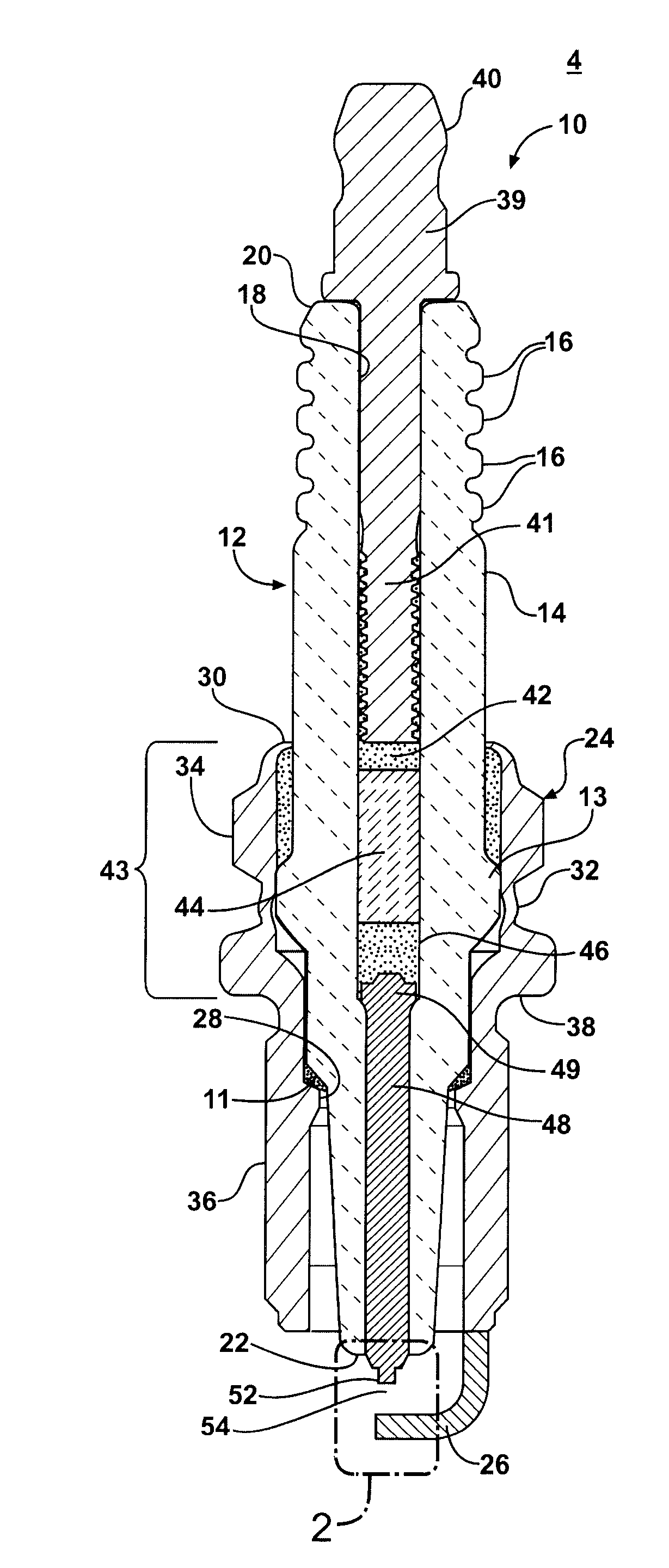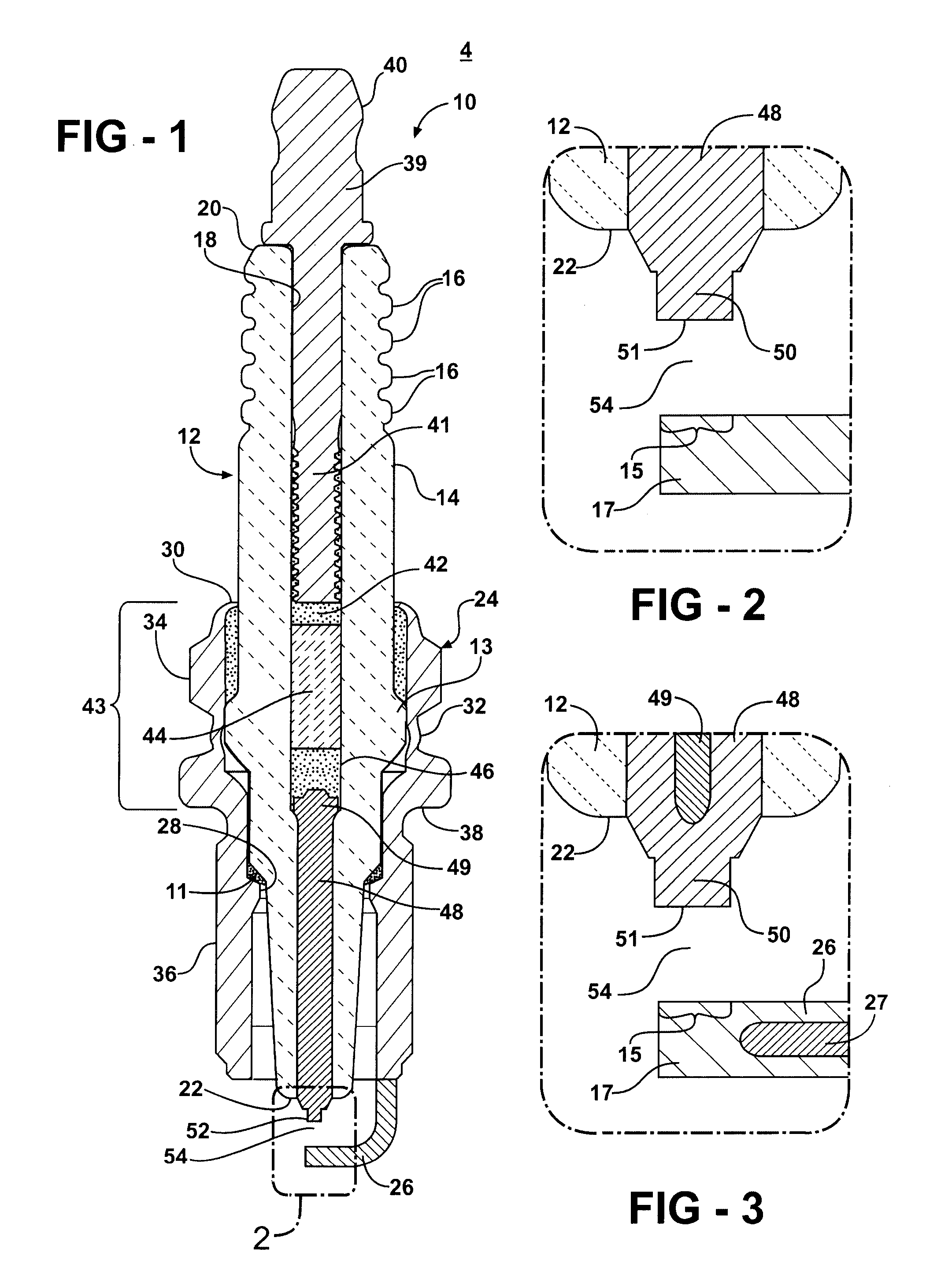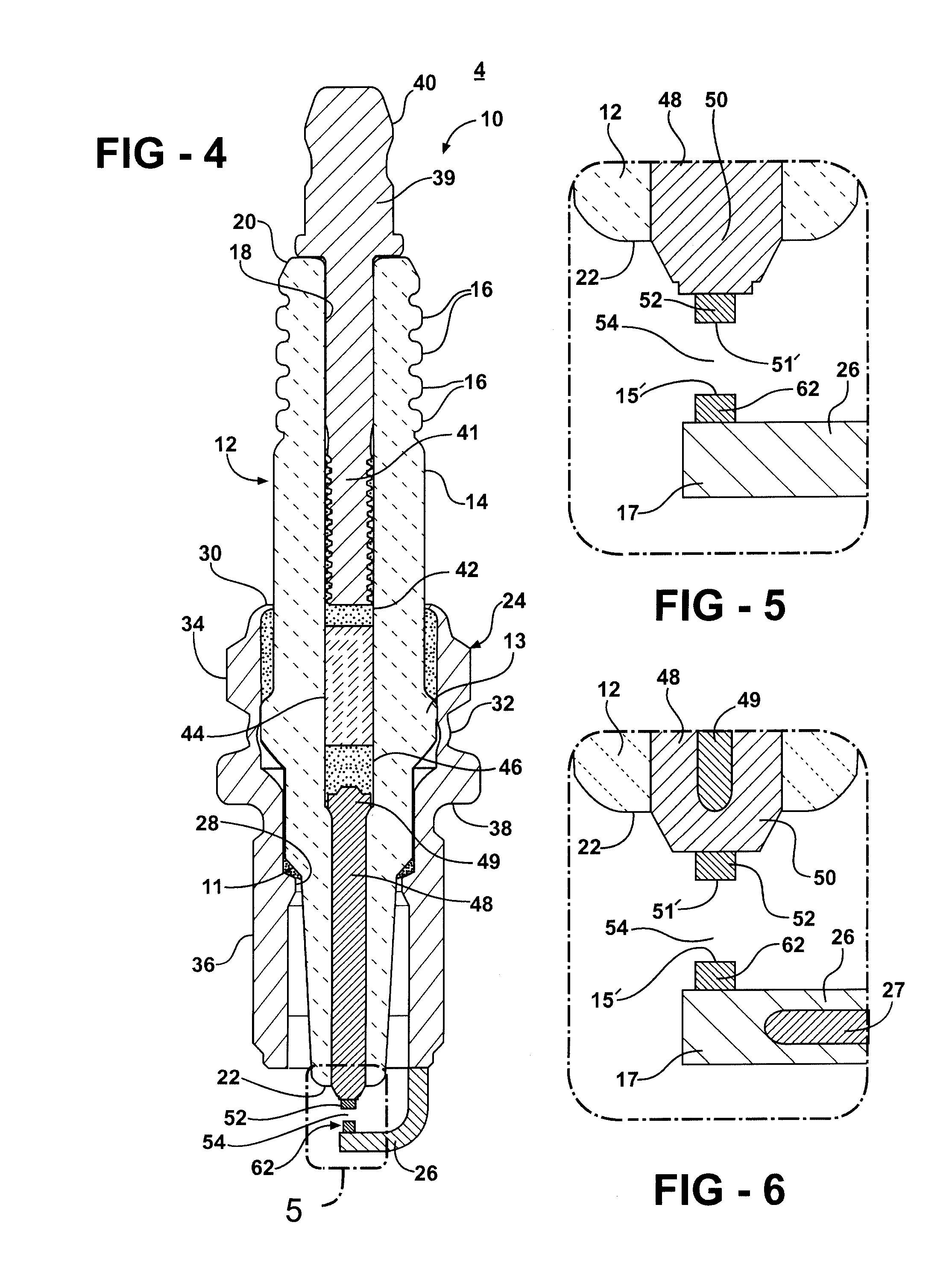Electrode for an Ignition Device
a technology of electrodes and ignition devices, applied in the direction of spark plugs, soldering devices, light and heating apparatus, etc., can solve the problems of reducing the service life of the electrode, so as to creep rupture and fatigue strength, and improve the resistance to cracking and fracture. , the effect of improving the properties
- Summary
- Abstract
- Description
- Claims
- Application Information
AI Technical Summary
Benefits of technology
Problems solved by technology
Method used
Image
Examples
Embodiment Construction
[0023]Referring to FIGS. 1-6, the present invention is an electrode for an ignition device 5 used for igniting a fuel / air mixture. The electrode may be used in any suitable ignition device 5, including various configurations of spark plugs, glow plugs, igniters and the like, but is particularly adapted for use in various spark plug electrode configurations. The electrodes of an ignition device such as a spark plug are essential to the function of the device. In spark ignition devices, such as spark plugs, the alloys used for the electrodes are exposed to the most extreme temperature, pressure, chemical corrosion and physical erosion conditions experienced by the device. These include exposure of the electrode alloys to numerous high temperature chemical reactant species associated with the combustion process which promote oxidation, sulfidation and other corrosion processes, as well as reaction of the plasma associated with the spark kernel and flame front which promote erosion of t...
PUM
| Property | Measurement | Unit |
|---|---|---|
| operating temperature | aaaaa | aaaaa |
| weight ratio | aaaaa | aaaaa |
| weight | aaaaa | aaaaa |
Abstract
Description
Claims
Application Information
 Login to View More
Login to View More - R&D
- Intellectual Property
- Life Sciences
- Materials
- Tech Scout
- Unparalleled Data Quality
- Higher Quality Content
- 60% Fewer Hallucinations
Browse by: Latest US Patents, China's latest patents, Technical Efficacy Thesaurus, Application Domain, Technology Topic, Popular Technical Reports.
© 2025 PatSnap. All rights reserved.Legal|Privacy policy|Modern Slavery Act Transparency Statement|Sitemap|About US| Contact US: help@patsnap.com



